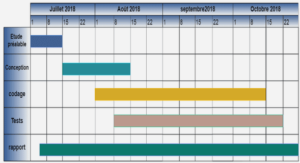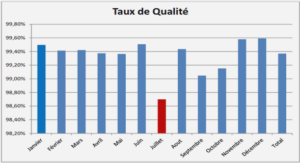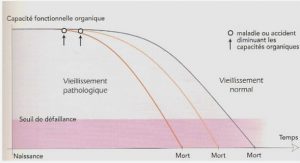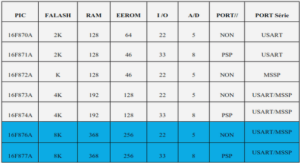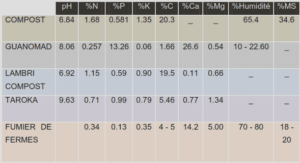A NODONTINE MUSSELS
ATERIALS AND METHODS
Study area
The Kouchibouguac River and the Kouchibouguacis River basins are located south of the Bay of Miramichi along the east coast of New Brunswick, eastem Canada (Fig. 2). The downstream sections of the two drainages pass through the Kouchibouguac National Park.
The Kouchibouguac and the Kouchibouguacis ri vers are located in the Maritime Lowlands Ecoregion. This region is characterised by fiat to gently sloping areas of sedimentary rocks (mainly sandstone and mudstone) (Poole 1976). The glacial and marine processes left a layer of sediments (less than 1.5 m) in most areas of tbe lowlands (Rampton et al. 1984).
The watershed areas are 370 and 393 ktl12 for the Kouchibouguacis River and Kouchibouguac River, respectively. The Kouchibouguac River is a fifth order stream, whereas the Kouchibouguacis River is a fourth order stream. An old breached dam is located near the mouth of the Kouchibouguac River. The dam was built in the summer of 1917 for electricity production and a breach was created in the late 1930’s following concems and complaints about dec1ining population of anadromous fish. Both watersheds are mainly forested, and activities Jike fOl·estry, farming, and human habitation are being practised. In more details, 49.0% of the Kouchibouguac watershed is forested, compare to 51 .3% for the Kouchibouguacis watershed. Forested activities, such as cutting, thinning and planting, account for 31.4% and 30.2% of the Kouchibouguac and Kouchibouguacis watershed, respectively. Agriculture (i.e. vegetables, christmas trees, bluebelTies) and human development (i .e. houses, cottages, gravel pits, bridges) represent a fairly small percentage of both watersheds, i.e. 5.6% of the Kouchibouguac watershed and 6.8% of the Kouchibouguacis watershed, and occur mainly in the downstream portion of the two watersheds. Historically, both ri vers were affected by the ship building industries and were the scene of wood transportation, wood mills and dams operating along both riverbanks.
None of these structures are operating today, but remnants of this period can still be seen (DeGrâce 1984; Beach 1988).
Mussel assemblage
A hierarchical sampling design was used to sample mussel communities. Benthic orgamsms are often aggregated following spatial heterogeneity of the environment (Morrisey et al. 1992). This natural aggregated distribution is encountered in freshwater mussel populations (Hastie et al. 2000) and makes sampling difficult when the objective is to study population dynamics (Downing & Downing 1992). In order to take spatial heterogeneity into account, a hierarchical sampling design, as proposed by Morrisey et al.
(1992) was selected. Stratification of the rivers would have provided valu able information in order to take into account heterogeneity of both rivers; unfortunately this could not be done due to lack oftime and resources.
Both rivers were separated into six equal segments of approximately 8.8 km. The six segments were th en divided into eight sections of approximately 1.1 km. In tum, each section was divided into five stations of approximately 200 m. The first step was to randomly select tlu »ee sections. In each of the sections, two stations were selected at random. Within each station, a 100 m2 site was selected in which tlu »ee different habitats were encountered (i.e., pool, riffle, and run; as described by Neves & Widlak 1987; Fig. 3).
Finally, 10% of the site were sampled (a minimum percentage reconunended; Downing & Downing 1992) by using ten 1 m2 quadrats distributed randomly. A total of 65 sites (650 quadrats) were thus sampled for freshwater mussels from 27 May to 17 August 2002. The Kouchibouguac River and the Kouchibouguacis Ri ver were sampled at 32 and 33 sites, respectively. Ail freshwater mussels on the riverbed (i.e. 1mburied) were counted, identified at the species level, and returned to the bed. No substrate excavation was done at the sampling site in order to capture buried individuals, althollgh special attention was given to smaller individuals (those with 30-50 mm shell length) by carefully 100 king under rocks (Strayer & Ralley 1993) and digging in finer sediments behind boulders. Some sites could not be sampled owing to inaccessibility and unsuitability for sampling (depth and turbidity). Sampling occurred only in the main channel; triblltaries were not sampled because of lack of time and resources. Mussel species were identified lIsing Clarke (1981a) and Nedeau et al. (2000).
Mussel community patterns were described within and between the rivers using cJuster analysis with average linkage (Primer v.5). Similarity matrix was computed using Bray- Curtis similarity index. Sites in which mussels were absent were withdrawn from the cJuster analysis. Species abundance data for ail simil arity matri ces were fourth-root transformed. Analysis of variance and Two-sample {-tests were used to detect significant difference between density pattem of the most common mussel (Margaritifera margaritifera) within and between the rivers. One-way analysis of variance and Kruskal- Wallis (SYSTAT v.9) were used to determine whether M. margaritifera abundance differed si gnificantly between rivers and among gradient zones (i .e., upstream, mid reach, and downstream) of each river. Abundance data of M margaritifera used in parametric analysis of variance were log transformed to avo id departure from nomlality and heterogeneity of variances. A Dispersal index was calculated in order to determine the spatial aggregation of the mussel populations (see Elliot 1977 for details; Hastie et al. 2000) at two different levels (quadrats and sampling stations). Departure from random distribution was then analysed using a Chi-square test (Elliot 1977). A Chi-squared test for goodness-of-fit was performed to compare the observed data from those of the Poisson distribution (Elliot 1977). The goodness-of-fit test could not be performed for aIl unionoids because of lack of density classes in sorne species.
Habitat characteristics
Macro- and microhabitat variab les were measured at each sampling site. The microhabitat variables were: water depth, percentage of different substrate types, percentage of macrophytes, percentage of large woody debris, and distance from shore. Depth was taken in the middle of the quadrat. Five classes, adapted from Simonson et aL. (1994), were selected for substrate composition: clay (0.004-0.062 mm), sand (0.062-2 mm), gravel (2- 64 mm), cobble (64-256 mm) and rocks (>256 mm). Each substrate class was estimated, to the closest 5%, by the field crewmember for each quadrat (adapted from Haag & Warren 1998). The same evaluation, to the closest 5%, was done for the macrophyte and large woody debris cover variables.
Link magnitude, stream order, river width, current velo city, conductivity, pH, width of the riparian zone, and sUITounding land uses were macrohabitat variables taken at the sampling site scale. Lillk magnitude is a measure of the total order I-streams occurring upstream of the site. This measure accounts for small changes in stream width and velocities; thus, it is considered more sensitive to hydrologie variations (Haag & WatTen 1998). The hnk magnitude and the stream order (Strahler 1957) have been obtained from 1:50 000 topographie maps. CUITent velocity was measured with a floating device (punctured plastic golf bail). Because of lack of expertise and resources, only two water chemistry variables were measured at the site leveL. Conductivity and pH were taken respectively with Hanna model HI8733 and HI9024 kit.
Width of riparian zone and land-use were obtained using Geographie Information System (GIS, ArcView 3.2) layers. Aerial photographies ( 1: 12 500, 1998) of the two watersheds were digitalised and georeferenced in the GIS. In the GIS, the « sampling site » information layer was superposed to the digitalised photographies, allowing the measurement of the length of riparian zones (m) for each mussel locations. To obtain the land-use variable, land LIse zones of 250 and 500 m in diameter were created around each site. The information in the GIS « forestry » layer (provided by the New Brunswick Service of Natural Resource 1995) was used to calculate the proportion of each land-use class contained in the land use zones. Five land use classes were determined: forested , agricultural, wetland, disturbed forest, and human development.
Simpson diversity index of substrate diversity was computed in order to estimate the substrate diversity of each river using the percentage of each substrate class found in quadrats (Primer v.5). A K.ruskal-Wallis was computed with SYSTAT (v.9) to compare substrate diversity between the two rivers. Analysis of variance and Speannan rank correlation were used to test for difference between habitat variables of the rivers, and to examine correlation among variables within river. A critical value table for correlation coefficients was used to test a significance of a correlation (Sokal & Rohlf 1981 b).
Fish assemblage
Electrofishing during periods of low flow is considered an appropriate method for sampling fish in shallow, relatively fast-flowing rivers with coarse substrate similar to those found in the Kouchibouguac River and the Kouchibouguacis River (Hartley 1980; Reynolds 1996; Schneider & Mema 2000). A total of 64 100-m2-site were sampled with an electrofishing backpack unit (Smith-root 12V). Since the objective of fish sampling was not to get a precise species density, but rather a relative species density, one open single pass was selected (Mitro & Zale 2000). Captured fishes were counted, measured and returned to the river. Mean fishing time depended on fish abundance, experience of the field crew, and obstacles within the sites (average of27 minutes, ranged between 16 and 70 minutes). Fish were identified using Scott & Crossman (1973), Bernatchez & Giroux (2000), as weil as expert identification with Dr. Brian Coad, Icthyologist at the Canadian Museum of Nature.
In the results section, fish species are listed fo llowing the systematic order found in Bernatchez & Giroux (2000).
Cyprinid specIes were grouped into one class for statistical analysis. American eels (Anguilla rostrata) and immature sea lampreys (Petromyzon marin us) were withdrawn From aU analyses because they are not reported as hosts for musse! glochidia.
The statistical methods used to test fish patterns between rivers are similar to the ones used for the mussels. The fish community pattern was first examined by clustering sites using Cluster group average method (Primer v.S). A Kruskal-WaUis test was used to verify differences in fish pattern between the two rivers. Fish abundances were fourth root transfOlmed, when necessary, to fulfill test assumptions. An R x C test of independence using G-test (Sokal & Rohlf 1981a) was perf0ll11ed to test whether the proportion of fish From three major families (i.e., Salmonidae, Catostomidae and Cyprinidae) differs between the two rivers. Shannon-Weiner diversity index was calculated and used in testing the difference in fish diversity between rivers.
Habitat – musse! relationships
Habitat preference curves were used to examine mussel preferences for specific range of a habitat variable. They were used to examine the optimal ranges of water depth, distance from shore, surface substratum types, and percent coverage by macrophytes and large woody debris for the mussels in the two rivers. In order to assess habitat preference, habitat availability was first taken into account (see Hastie et aL. 2000 for complete methodology).
A Suitability Index (SI) was then calculated and plotted for each mussel and each habitat variable. Suitability index is a score ran ging from 0 to 1 representing respectively unsuitable and optimal habitat conditions for each mussel species. Discrete quantitative habitat variables (e.g., distance from shore) had to be c!assified into groups in order to perfonn this analysis (Hastie et aL. 2000).
In order to discriminate habitat variables that might explain variability in mussel abundance, a stepwise discriminant analysis was performed with Systat v.9, using a selection of variables at p=0.15 to enter or remove variables. The stepwise discriminant analysis was only perfonned on Margaritifera margaritifera densities because the occurrence of the two other mussel species were too low to be analysed. M. margaritifera densities were grouped into four classes: abundant (> 1.0 ind .lm2 ) , common (0.2-1.0 ind.lm2 ), scarce (0-0.lind.lm2 ), and absent (0 ind .lm2 ) . The habitat variables were tested for colinearity (Draftsman plot analysis, Primer v. 5) and departure from nonnality (Kolmogorov-Smimov One Sample Test, Systat v.9). Several variables were withdrawn of the analysis because of colinearity. Stepwise discriminant analysis was performed on Il habitat variables: pH, conductivity, magnitude, depth, velocity, mean percentage of sand, gravel, cobble, macrophyte and large woody debris cover, and percentage of forested land surrounding the sampling sites. Conductivity, macrophyte co ver, large woody debris cover, and magnitude were square root transformed.
|
Table des matières
RÉSUMÉ
T ABLE DES MATIÈRES
LISTE DES TABLEAUX
LISTE DES FIGURES
lNTRODUCTION GÉNÉRALE
BIBLIOGRAPHIE
CHAPTER 1: FACTORS INVOLVED IN THE DIVERSITY, DISTRIBUTION AND ABUNDANCE OF FRESHWATER MUSSELS (UNIONOIDEA) IN TWO COASTAL RIVERS OF NEW BRUNSWICK
ABSTRACT
lNTRODUCTION
MATERIALS AND METHODS
STUDY AREA
MUSSEL ASSEMBLAGE
H ABITATC/-IARACTERlSTlCS
Fls/-I ASSEMBLAGE
H ABITAT – MUSSEL RELATIONSHIPS
F/SI-{ AND MUSSEL RELA TlONSI·/IPS
RESULTS
UNIONOfD ASSEMBLAGE
Kouchibouguacis River
Kouchibouguac River
HABITAT C/-IARACTERISTICS
F/SI-J ASSEMBLAGE
R ELATlONS/-IIPS BETWEEN FRES/-IWATER MUSSELS AND /-IAB ITAT
R ELA TlONS/-IIPS BETWEEN FRES/-IWATER MUSSELS AND FIS/-I ASSEMBLAGE
DISCUSSION
MUSSELASSEMBLAGE
MUSSEL RELA TlONS/-IIPS WIT/-I /-IABITAT VA RIABLES
F ls /-I ASSEMBLAGE
MUSSEL AND FIS/-I ASSEMBLAGES
LITERA TURE CITED
CHAPTER II: OCCURRENCE OF ELLIPTIO COMPLANA TA , PYGANODON CA TA RACTA AND
A LASMIDONTA VARICOSA GLOCHIDIA ON FISHES OF THE KOUCHIBOUGUACIS RIVER, COASTAL NEW BRUNSWICK, CANADA
ABSTRACT
lNTRODUCTION
MATERIALS AND METHODS
A MBLEMINE MUSSELS
A NODONTINE MUSSELS
RESUL TS AND DISCUSSION
A MBLEMINE MUSSELS
A NODONTINE MUSSELS
LITERA TURE CITED
CHAPTER III: DIFFERENTIAL USE OF FISH HOSTS BY THE FRESHW ATER M USSEL
PYGANODON CA TARA CTA IN A POND ADJACENT TO THE KOUCHIBOUGUACIS RIVE R,
COASTAL NEW BRUNSWICK
ABSTRACT
I NTRODUCTION
MATERIALS AND METHODS
STUDY A REA
RESULTS
DISCUSSION
LITERA TURE CITED
CONCLUSION GÉNÉRALE
BIBLIOGRAPHIE
![]() Télécharger le rapport complet
Télécharger le rapport complet


